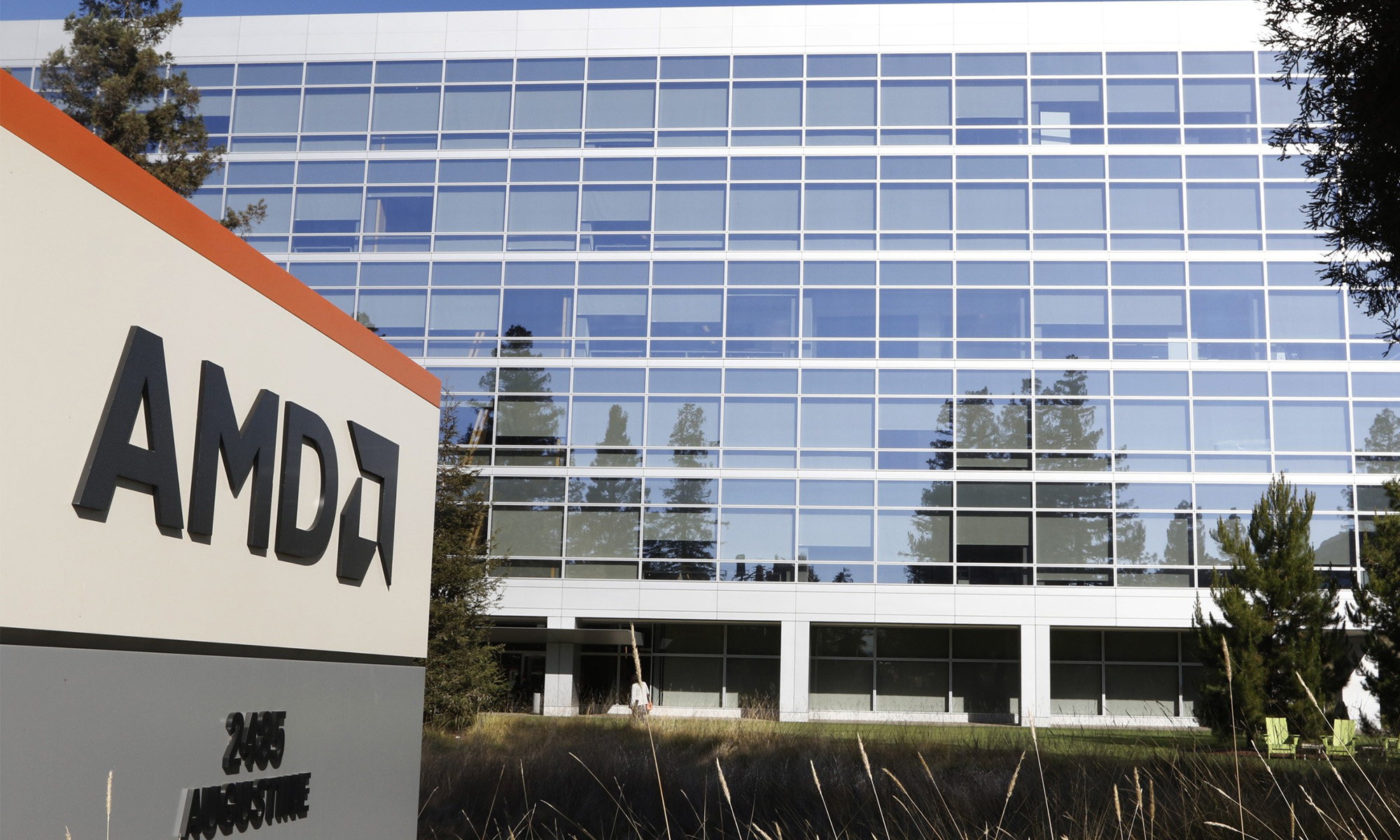Kudos to Advanced Micro Devices (AMD +4.35%) for remaining competitive with technology rivals Intel (INTC +6.86%) and Nvidia (NVDA +1.26%). That's no small feat.
Nevertheless, AMD is neither the leader of the graphics processing industry nor of the computer processor market. Given that investors are generally told to (and tend to) own stakes in the leading companies of any given business, Advanced Micro Devices isn't a stock that's always easy to get excited about buying.
This may be an instance, however, where the second-place name is actually the top investment prospect among the companies in question. Four charts illustrate why.

NASDAQ: AMD
Key Data Points
Data centers are now the breadwinner
The first chart seems complicated at first blush, but it's not. It's just a comparison of how each of AMD's business lines (data center, gaming, embedded, and client) have evolved over time. The bars are revenue, and the lines are operating income; each business's revenue and operating income are also color-coordinated.
As you can see, data centers -- thanks to the expanding interest in all things artificial intelligence -- are now the company's single biggest source of sales and profits.

Data source: Advanced Micro Devices. Chart by author. Figures are in millions.
This is an encouraging evolution. Data centers are not only the technology sector's best growth opportunity for the foreseeable future, but the ongoing growth of AI will make this business the most consistent, reliable business Advanced Micro Devices is in during that time. Precedence Research suggests the AI hardware market is poised to grow at an incredible annualized pace of 24.3% through 2033, jibing with a handful of other outlooks for the industry.
Cash is flowing in earnest again
AMD hasn't always been waist-deep in the AI hardware business. It was well behind Nvidia until just a few quarters ago. Advanced Micro Devices arguably didn't turn up the heat on the opportunity until late last year with the unveiling of its M1300X graphics processing unit purpose-built for AI applications. Prior to that, its tech was anything but the go-to name for AI applications.
Problem? Developing or redeveloping an entire hardware architecture isn't cheap. The company's been spending a ton of money of late on research and development without an immediate return on its investment. It's also been gradually booking the cost of acquiring Xilinx back in early 2022, which has been eating into its net income in the meantime.
There's a light at the end of the tunnel, though: As seen in the chart, after a clear lull for both last year, operating cash flow and net income are normalizing at positive levels again. (Last quarter's dips are largely seasonal rather than a hint of a new headwind.)

Data source: Advanced Micro Devices. Chart by author. Dollar figures are in millions.
Gross profits are obviously flat, with Advanced Micro Devices being forced to be price-competitive on the AI hardware front. But that's OK. The company's still winning this business; it will gain pricing power as its AI tech continues to prove itself. Gross profit margin rates are stable in the meantime.
To this end, analysts expect last year's per-share profits of $2.65 to grow to $3.51 per share this year en route to $5.59 per share next year. Then the party really starts, with this year's projected per-share profits expected to nearly triple by 2028.

Data source: StockAnalysis.com. Chart by author.
Bottom line? Shareholders don't have to worry about AMD being able to operate as it wants to, simply because there's no earnings or extra cash to work with.
And speaking of extra cash...
Advanced Micro Devices is practically debt-free
Last but certainly not least, AMD carries very little debt, and could be debt-free if it chose to be.
As of the end of March, the company's only servicing about $1.7 billion worth of long-term debt, versus roughly $6 billion worth of cash or near-cash on its balance sheet. There's also nearly $10 billion worth of assets like inventory and accounts receivable on the books that could become cash in short order if necessary. For perspective, Advanced Micro Devices' current market cap stands at $257 billion.

Data source: Advanced Micro Devices. Chart by author. Figures are in millions.
Don't read too much into the message: AMD's got nearly $1.8 billion in "other" long-term liabilities that don't qualify as debt. It's also got a little over $3.4 billion in accrued short-term liabilities. There are bills to pay, to be sure.
Still, with $17.1 billion worth of current assets and less than half that amount in short-term and long-term liabilities, Advanced Micro Devices enjoys far more fiscal flexibility than many other technology giants do. Also, notice that AMD's total liabilities are simply shrinking.
More than enough to make AMD stock a buy
The usual risks apply, of course. Chief among them is the possibility that Intel and Nvidia will each make a specific point of putting AMD back in check before the up-and-comer steals any additional market share.
The fiscal trajectories laid out in the charts, however, still paint a clear picture. This company is doing several things right and is now -- finally -- reaping the benefits. More of the same progress is in the cards, too. Most other companies would love to be in this particular position.
So, connect the dots: Even if largely for mathematical reasons, this stock's pullback from March's high is a buying opportunity.







